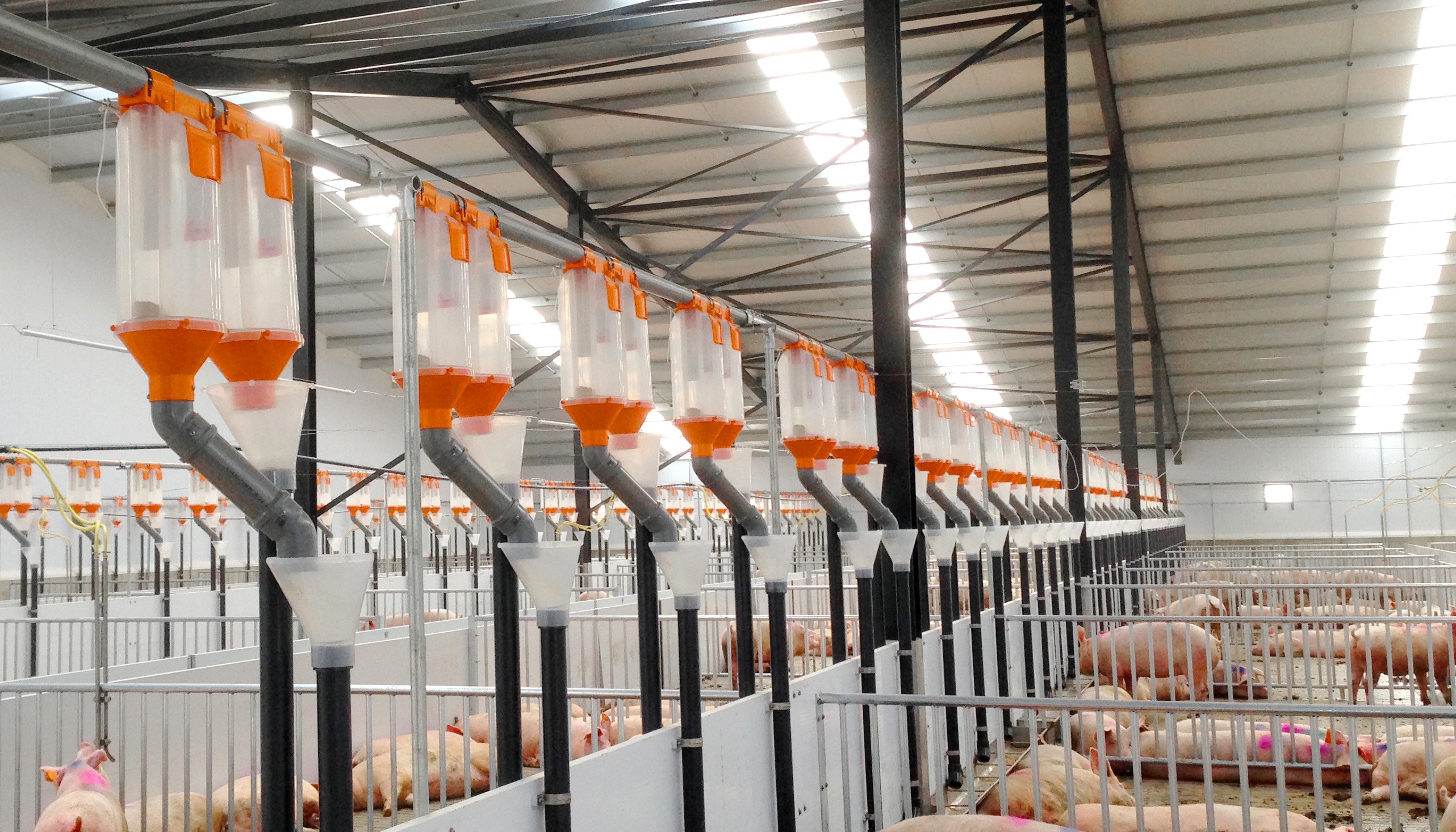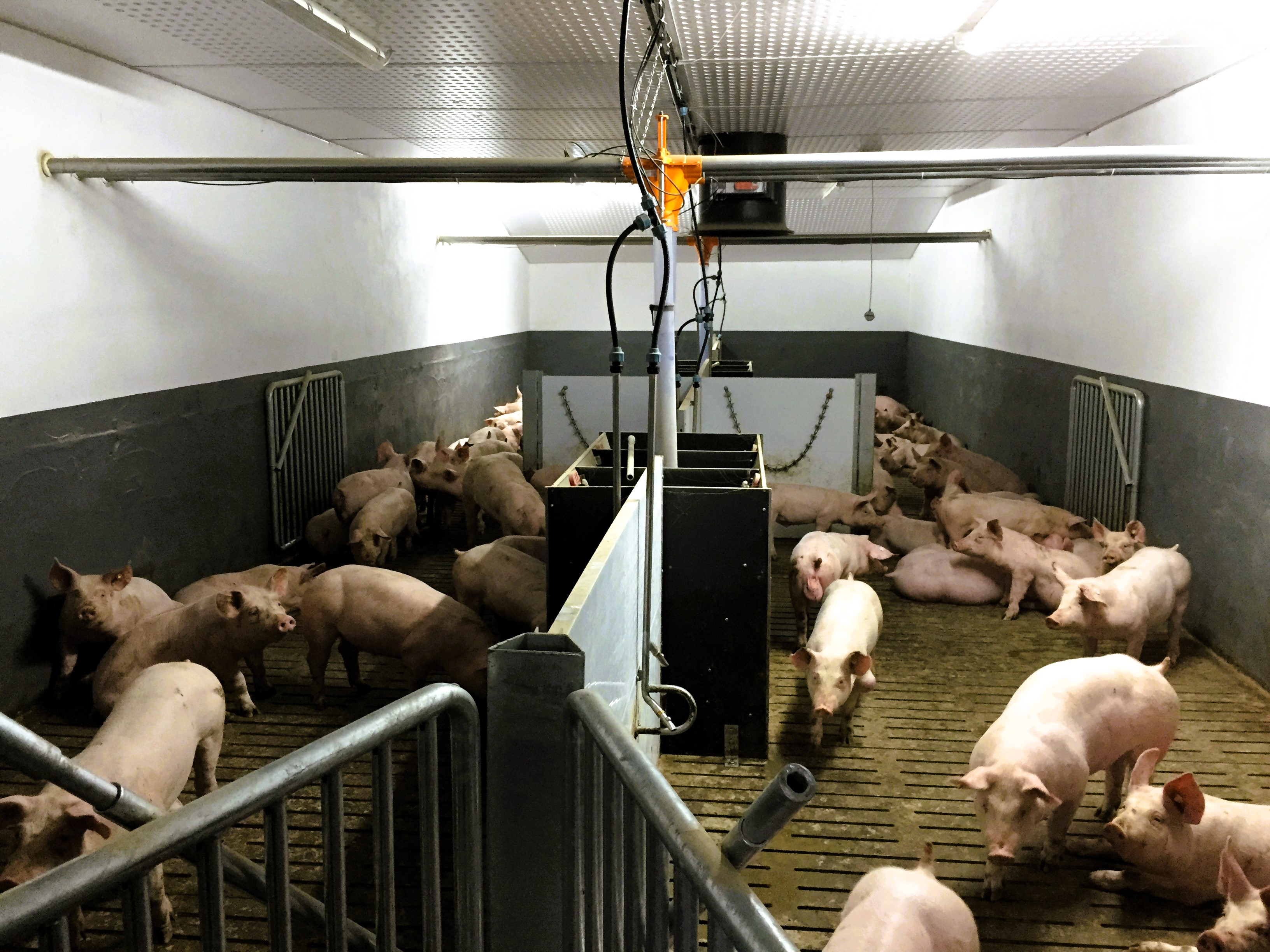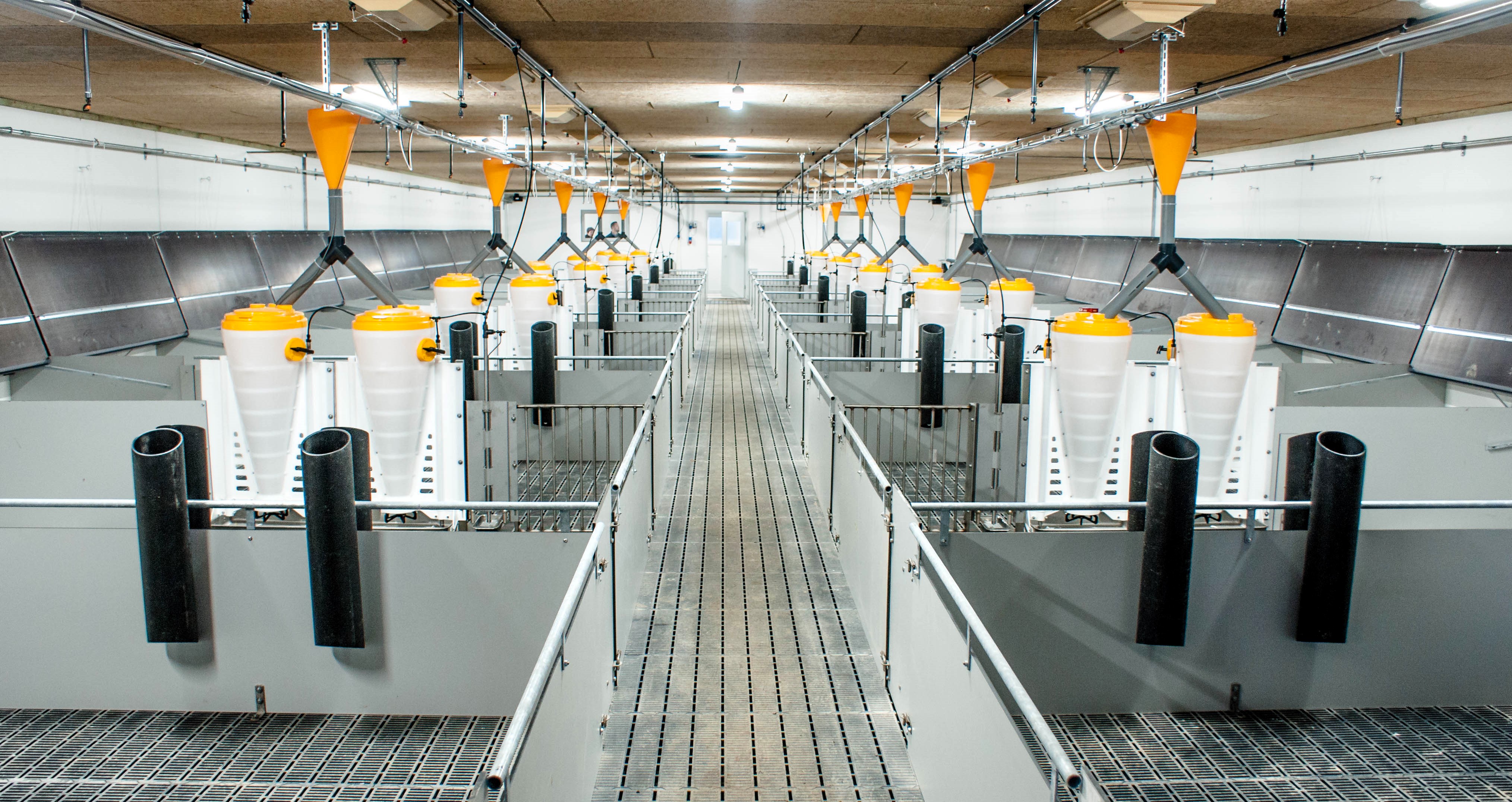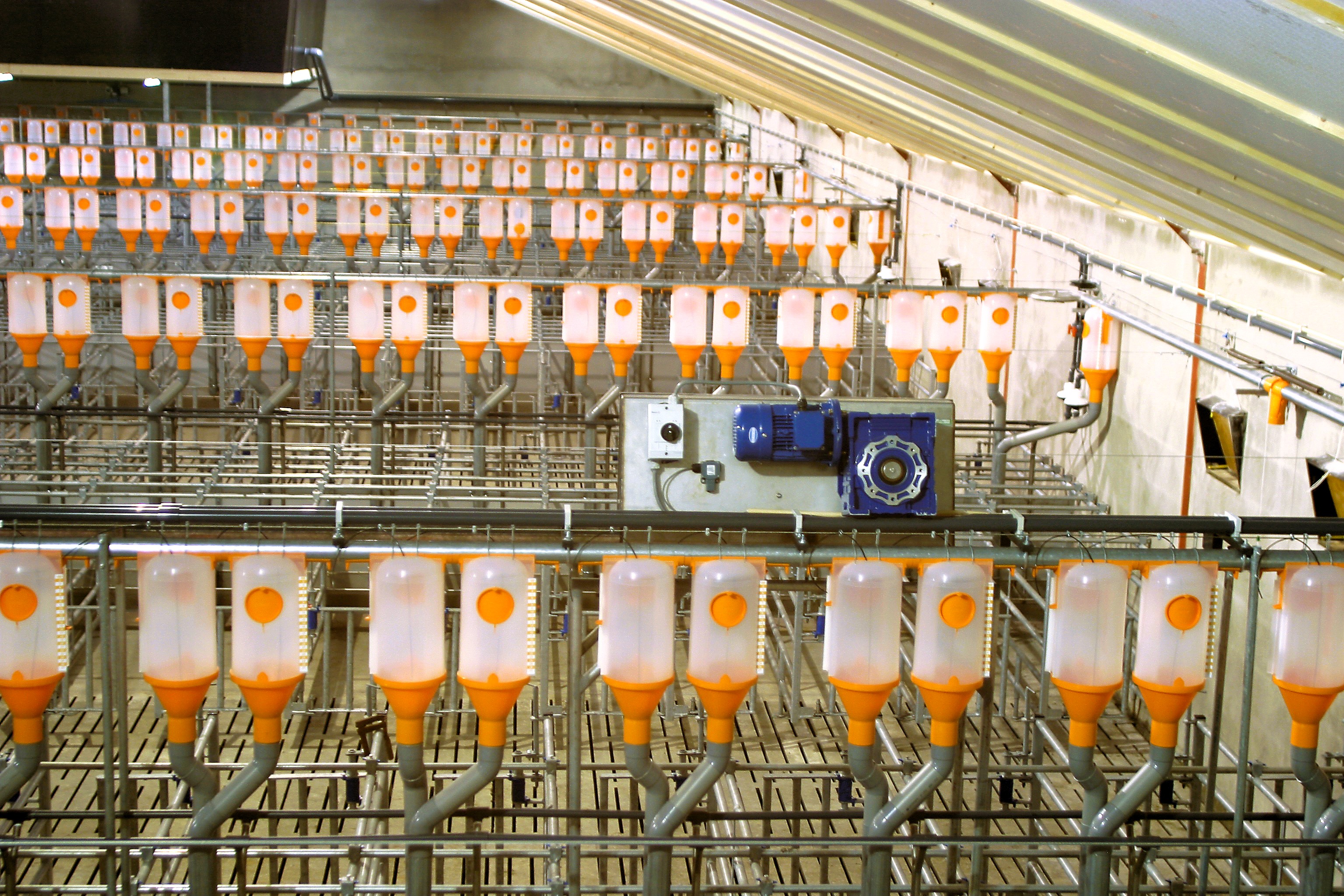Group feeding – dry
Reliability comes first
Around the world, pigs are most commonly kept in group housing. For decades now, TEWE has been meeting the nutritional requirements of pigs in groups with well-developed, precise and proven technology which operators can fully rely on. TEWE dry feeding technology stands the test of time, and it’s easy to install and maintain.
Depending on the equipment, TEWE’s dry feeding can be used to achieve very high dosing accuracy, maximum feed hygiene, customised programming of feeding curves, and much more. Optionally, the animals can be fed up to the biologically feasible optimum via sensors installed in the automatic feeders, without running the risk of overfeeding the animals, wasting feed or causing feeders to overflow.
The following TEWE dry feeding solutions can be combined with any TEWE product solution:
- ad libitum feeding (preferred for piglets and pre-fattening pigs)
- computer-controlled batch feeding
- multi-variety feeding
- integration of additive dosing systems
Overall, dry feeding systems for groups offer a variety of benefits, including precision, flexibility, hygiene and reliability, which help optimise feeding processes and animal welfare.
In conclusion
TEWE dry feeding systems offer several benefits for group husbandry of fattening pigs. The systems are precise, hygienic and customisable, ensuring optimal care for the animals. The technology enables precise dosing and custom programming of feeding, which greatly improves the health and wellbeing of the animals. In addition, the systems are durable and reliable, making them a prudent investment for farmers. The ability to seamlessly combine them with other TEWE product solutions increases efficiency and enables integration into operational processes. Overall, TEWE dry feeding systems significantly contribute to optimising feeding processes and improving animal welfare.

Benefits
- Individual feed rations for each animal: Feed quantities adjusted to the individual needs of each animal.
- Prevention of dominance behaviour: Even feed distribution prevents fights over feed and dominance behaviour.
- Improved animal welfare: Precise, hygienic feeding technologies improve animal welfare.
- High-precision feeding at every stage: Precise feeding at every stage of the animals’ lives based on determination of their specific needs.
- Flexibility in choice of husbandry system: More options to choose from, e.g. combination of sow pens and free-range pen.
- Adaptable to stable or dynamic groups: Stable or dynamic group housing as required.
- Improved monitoring and cost control: Big data management allows better monitoring of animals and costs through use modern management systems.
Features
Precision and exact dosing:
TEWE dry feeding enables very high dosing precision, which ensures the animals receive the exact amount of feed they need. This reduces the risk of overfeeding and feed waste.
Optimal feed hygiene:
The technology ensures optimal feed hygiene to minimise the risk of infection and disease. Feed hygiene is ensured by the use of high-quality materials and sophisticated construction.
Custom programming:
Dry feeding enables custom programming of feeding curves. This allows feeding times and feed quantities to be adjusted to the specific needs of the animals.
Adaptability:
TEWE dry feeding solutions offer various options, such as ad libitum feeding, computer-controlled batch feeding, multi-variety feeding, and the integration of additive dosing systems. This allows flexible adaptation to the needs of different animal groups.
Durable and reliable:
As proven by extensive use in practice, the technology is durable and reliable. The system’s users can rely on its consistent functionality and ease of maintenance.
Prevention of overfeeding and waste:
Precise dosing and custom programming prevent overfeeding and feed waste.
Combinable:
The dry feeding solutions can be seamlessly combined with other TEWE product solutions for efficient, integrated farm operation.
Group farrowing of sows
Challenges and measures to reduce loss of sucklings
Group farrowing, which involves keeping several sows in a common farrowing area, presents benefits as well as challenges. One of the biggest problems that can arise here is the high rate of suckling loss. To better understand and solve this problem, it’s important to consider the benefits as well as the specific challenges of group farrowing and identify suitable measures to reduce losses.
Advantages of group farrowing:
- Natural behaviour: The animals can exhibit their natural social behaviour, which has a positive effect on their wellbeing.
- More efficient use of space: Group housing can enable more efficient use of available space.
- Reduced costs: Potential to reduce construction and operating costs through shared resources.
Challenges and high rate of suckling loss:
- Increased risk of injury: In group farrowing, sucklings are at greater risk of being injured or crushed by sows.
- Uneven feed distribution: Dominant animals can control access to feed and resources, causing less dominant animals to be underfed and weakened.
- Stress and aggression: Proximity to other sows can lead to heightened stress and aggressive behaviour, which can also result in loss of sucklings.
Measures to reduce loss of sucklings:
- Optimised feeding systems: The use of precise custom feeding systems ensures that all animals are fed adequately and equally. Additive dosing systems can help treat nutrient deficiencies and meet specific health targets.
- Increased monitoring and management: Close monitoring of the animals and immediate intervention upon signs of stress or aggression. The use of modern management systems (big data management) can aid in monitoring the health and behaviour of the animals.
- Protective measures for sucklings: Protective zones or retreats are set up for sucklings to protect them from mother animals and minimise the risk of crushing.
- Separation according to need: Option to temporarily separate weaker or needier animals to give them peace and allow them to access feed undisturbed.
- Stress reduction: Stress reduction measures, such as better pen design and provision of manipulable materials, can help to minimise aggressive behaviour.
- Continuous training and professional development: Staff receive regular training on the latest technologies and scientific findings regarding group farrowing and animal health to ensure optimal care and management.
By combining these measures, suckling losses in group farrowing can be reduced, allowing the benefits of group housing to be better exploited while minimising the negative effects.
References




